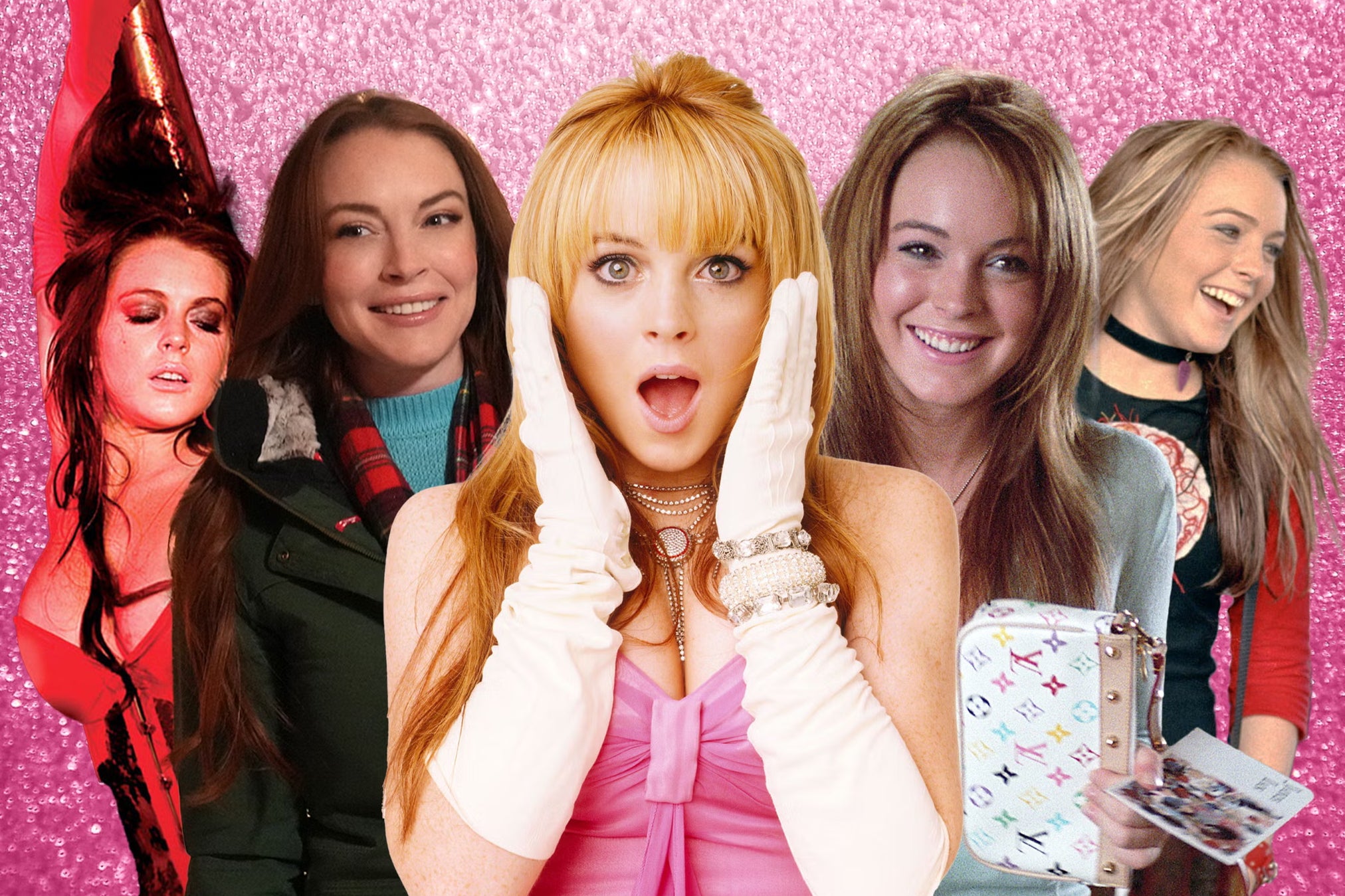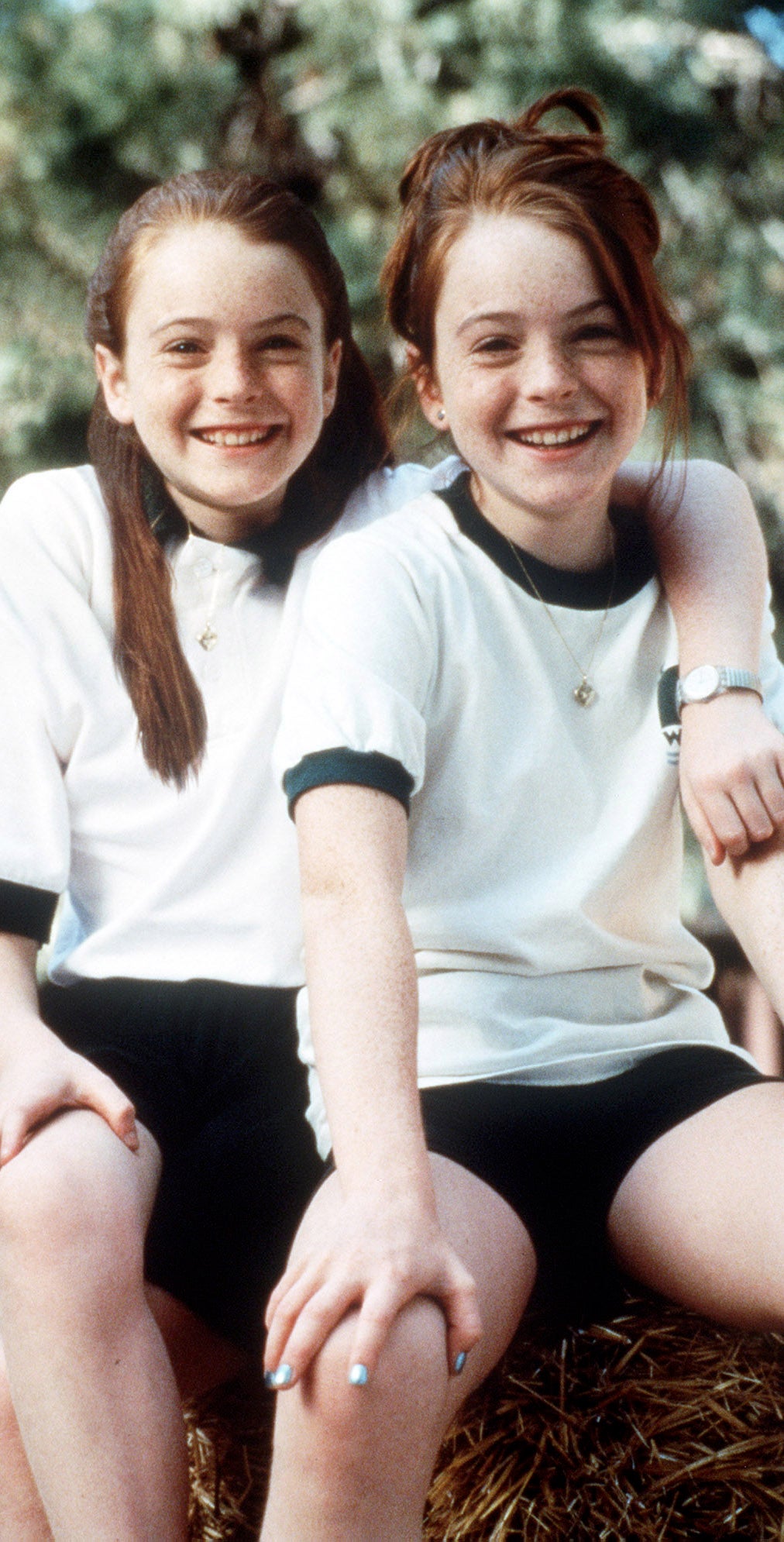Lindsay Lohan is back – here’s how Netflix can make her great again
The ‘Mean Girls’ star has just signed a two-picture deal with Netflix and already has a Christmas movie for them in the can. A renaissance seems to be in full swing, writes Adam White, but what distinct phase of Lohan’s movie career will be resuscitated with her?


Tracking Lindsay Lohan comebacks is a bit like tracking different incarnations of the Sugababes. The actual numbers are unclear – you just know there have been a lot of them. The actor, tabloid mainstay, part-time pop star and one-time leggings designer cycles through possible renaissances every couple of years. They always seem promising at first, only to inevitably fall apart. But as much as we should know by now to never trust a possible Lohan resurgence, this newest one does seem different.
Last week, Netflix announced that they had signed Lohan to a two-picture deal, one kickstarted by the successful production of a forthcoming Christmas film Lohan shot for the streaming service. What’s striking about this particular nugget of news is that Netflix is obviously legit, the festive movie – Falling for Christmas – is already in the can, and Lohan herself is more of a mirage than she used to be. Typically sequestered in a luxury flat in Dubai and far away from prying eyes, Lohan is today strangely anonymous as a celebrity. Free her of all that noise and acting suddenly seems viable again.
But which kind of Lohan are we talking about here? For someone whose time in the spotlight tends to be condensed into simplistic rhetoric – the child star gone awry – she’s had a remarkable number of career cycles. There is a Lindsay Lohan for all seasons, each persona appealing in its own way. And due to her recent silence, she today has something of a clean slate. With that in mind, we’ve tried to split Lohan’s career into specific phases for Netflix’s benefit, just in case they need any pointers as to the LiLo subgenre they’d be smart to resurrect – and smart to leave behind.
The early years
Vintage Lohan is sunny Lohan. Discovered at age three and an internationally acclaimed actor by 11, Lohan preternaturally “popped” on screen. She is ludicrously good in the 1998 remake of The Parent Trap, playing long-lost twins who unexpectedly meet one another at summer camp. She had a poise and sense of comic timing far more in keeping with the Diane Keatons of the world than the Mary-Kate and Ashleys. And even back then, she seemed drawn to different personas. She obviously played dual roles in The Parent Trap, but did the same in the body-swap comedy Freaky Friday (2003), and 2004’s Confessions of a Teenage Drama Queen. There, she is an ordinary girl always pretending to be far more glamorous than she is. Even the teen classic Mean Girls (2004) – arguably her definitive movie, though there’s surprising competition – hinges on her character’s ability to shift between guises depending on the classmates she’s hanging out with. It’s where she’s at her best as an actor. Falling for Christmas seems to take a page from that book, at least, with Lohan playing a wealthy, vapid heiress given a second chance at life when she develops amnesia.
The prestige years
Lohan’s elevation to prestige movie star – starring alongside Meryl Streep and Lily Tomlin in Robert Altman’s A Prairie Home Companion (2006) and Jane Fonda in Georgia Rule (2007) – coincided with her off-camera antics beginning to overpower her acting.
In 2007, she was arrested for driving under the influence, then arrested again for possessing cocaine. She violated the terms of her probation, went to jail, went to a couple of different rehabs, and was publicly chastised by the studio behind Georgia Rule for “irresponsible and unprofessional” behaviour on the set. Numerous film projects dropped her from their casts, and a side career in music stalled. She always knew that she’d messed things up, though, pointedly declaring to Vanity Fair that “I want my career back”. But her statements never seemed to reflect what she was actually doing in reality. It’d be great to see her get a second chance in these kinds of movies, though, particularly now that she’s in a calmer personal state.

The grunge era
The messiest days of Lohan’s personal life occurred at the peak of internet gossip cruelty. She seemed second only to Britney Spears when it came to being hounded by the paparazzi, while every new mugshot, ankle monitor and professional setback was poured over by Perez Hilton and the nascent TMZ. At the same time, though, she was veering into an interesting career phase, reminiscent of a freshly sober Drew Barrymore carving out an early Nineties niche playing seductresses and killers.
I Know Who Killed Me (2007), Lohan’s infamous amputation thriller, is a haunted inverse of The Parent Trap. She stars as long-lost twins, one a bookish high schooler, the other a grungy stripper. Lohan seems groggy and distracted throughout, but there’s still a compelling allure to her performance. Likewise in The Canyons, a nihilistic erotic thriller from 2013 written by Bret Easton Ellis, wherein Lohan’s voice is so shot that it sounds like she’s eaten an entire box of cigarettes. Whether she’d want to return to this kind of filmmaking is unclear – it’d be understandable if she wouldn’t – but I’d love to see her make bold choices again.
The meta era
While The Canyons often gets earmarked as Lohan’s on-camera low point, it’s actually the work she was doing around it that most scraped the barrel. The early 2010s saw Lohan make a haphazard return to Hollywood, but her casting only ever seemed to be an elaborate in-joke. There she is as a half-cut party girl dressed as a nun in Robert Rodriguez’s Machete (2010), and later making a sex tape with Charlie Sheen in Scary Movie 5 (2013). All of this seemed inevitable, Lohan tangling with a town that had already decided she was a joke. It’s the saddest era of her career as a result, potentially because it’s when she most lost control of things. It would be disastrous if she and Netflix ventured back here.

Watch Apple TV+ free for 7 day
New subscribers only. £9.99/mo. after free trial. Plan auto-renews until cancelled.
ADVERTISEMENT. If you sign up to this service we will earn commission. This revenue helps to fund journalism across The Independent.

Watch Apple TV+ free for 7 day
New subscribers only. £9.99/mo. after free trial. Plan auto-renews until cancelled.
ADVERTISEMENT. If you sign up to this service we will earn commission. This revenue helps to fund journalism across The Independent.
The reality-TV era
Produced by Oprah Winfrey, Lohan’s 2014 reality show Lindsay aspired to be a candid and unflinching glimpse of a sober, comeback-ready Lohan. In truth, it was the story of a spiralling celebrity desperate for her show not to be a train wreck. Chain-smoking and dejected, Lohan is constantly on edge, trying to salvage a programme always sliding into voyeuristic car-crash mode. If she wasn’t loudly proclaiming her sobriety while standing next to bottles of wine, she was infuriating assistants, agents and even Oprah herself.
That clash of the two Lohans – the misunderstood angel she claims to be and the tornado of chaos everyone around her experiences – would come to define her adventures in reality TV, which also included a bizarre BBC documentary in 2010 in which she investigated human trafficking in India. Dressed in a headscarf and cradling orphans, she is practically Saint Lindsay. Off camera, she was accused of skipping Unicef meetings and taking credit for peace work she didn’t actually do.
This phase of Lohan’s career is probably the most authentic to her, but not really for the right reasons. Nothing before or since seemed to get to the crux of her character better, or the internal wrestling match she always seemed to be fighting. But what Lohan definitely doesn’t need in 2022 is this kind of openness – mystery serves her better.

The surreal globetrotting years
Lohan’s move to Dubai – and subsequently her retreat from the spotlight – seemed smart on paper. But there was also a lot of weirdness during this era, which only seemed more heightened because Lohan generally wasn’t in the news as much. Remember the Instagram Live in 2018 in which Lohan – who was, for some reason, hanging out in Moscow – appeared to try and “save” Syrian children from their mother? Remember her strange new accent, which was somewhat American, somewhat British, and somewhat Ben Kingsley in Gandhi? Or her alleged friendship with Saudi crown prince Mohammed bin Salman? It’s all been a bit dark, hasn’t it?
Longtime Lohan observers will be aware that to follow her in the news is to always be tumbling down murky rabbit holes. But something about this moment in her life and career seemed more “off” than usual. In fairness, it’s now been a few years since Lohan was, for instance, working on behalf of the Turkish president to help refugees (?), and she seems to finally be settled. She did a virtual Mean Girls cast reunion in 2020, and shone just as brightly as her one-time co-stars. She’s engaged to a man named Bader Shammas, who is reportedly an investment banker. Her Instagram is remarkably low-key, full of selfies, affirmations and throwbacks.
If Lohan-the-Netflix-star ultimately doesn’t just recreate one of her old personas, her current “tranquil, in love, a bit dull” one is a good place to start. Sure, there’s still that lingering ambiguity with her – as if she’s always dangling perilously off a cliff edge – but by now it’d be weird if there wasn’t.
Join our commenting forum
Join thought-provoking conversations, follow other Independent readers and see their replies
Comments


Bookmark popover
Removed from bookmarks